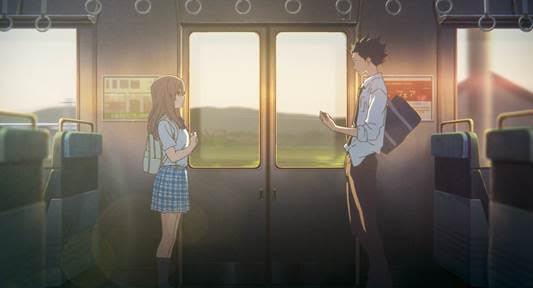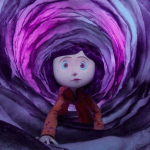This animated film dives into congenital deafness and school bullying, but I also see threads of friendship, humanity, inner conflict, and the disconnect between ourselves and the world.
A Shift in the Classroom
At school, Ishida, a lively, mischievous boy, thrives with his friends. Things shift when Nishimiya, a deaf girl, joins the class. As usual, he teases her to feed his restlessness, drawing laughs and attention from his buddies.
Over time, this morphs into cruel bullying, and Ishida only realizes it too late. The aftermath costs him dearly as he works to atone—facing the sting of isolation himself, with no friends left to understand him.
School Bullying: A Harsh Haunting
Every classroom is a mini-society, shaped by students who don’t always focus on learning or making sweet memories. Schools mirror real-world issues, with bullying standing out starkly.
It often starts innocently—jokes or mean remarks aimed at defenseless kids. Gradually, to up the thrill or flex power over impressionable peers, the prankster turns tormentor. They get savvier at picking targets and devising nastier tricks, their humanity eroding unnoticed.
The breaking point hits when bullying sparks severe consequences: victims suffer deep physical and emotional scars, while bullies either spiral after expulsion or trudge on, shunned and judged.
Victims’ wounds are plain to see, but perpetrators pay a price too. Ishida lives it: from a spirited, popular kid to a timid, guilt-ridden shadow in middle school. He avoids eye contact, dreads voices fearing condemnation, even plans suicide when he can’t take more.
This part reminds me of karmic paintings in temples—what you sow, you reap, maybe in this life or the next. Ishida’s bullying boomerangs fast: for unfairly targeting the weak, he’s unfairly cast out; for hurting a friend, he can’t make any; for causing pain, he endures it.
Luckily for Ishida, the reckoning comes early, giving him a tough but timely chance to make amends. Not every kid gets that shot—or a rescue like Nishimiya’s. In despair or depression, some turn to death, and by the time adults notice, it’s too late.
Death Ends, It Doesn’t Solve
Both Ishida and Nishimiya contemplate suicide, acting as if it’s the fix for everything. We shouldn’t rush to judge—kids aren’t alone in this; adults, too, can see death as the only way out in a dead-end.
You can’t escape pain by piling more onto loved ones. If Ishida and Nishimiya had died, their families would’ve been wrecked. Realizing too late that suicide was a mistake, they couldn’t undo it. Death’s a one-way road—no one comes back.
Being born means we must finish our journey, learning what we need along the way. Suicide is dropping out mid-course, and dropouts miss graduation. Who knows when we’d get another chance to settle life’s debts?
Religions forbid suicide—it’s a betrayal, first to our earthly parents, then to creation itself. Death isn’t ours to command; taking our life defies nature’s will.
Negative thoughts, loneliness, mental scars, depression, ignorance about death—all push Ishida and Nishimiya toward that dark edge. But the film shows if they’d died, they’d have forever dodged their responsibilities.
Fear and warped thinking can easily rob teens—already so sensitive—of reason. If you’re a young reader, hear this again: death is an end, not a solution.
Don’t choose death to flee, treating it like deleting a social media account or using it to guilt-trip those left behind—while the public jumps on the tragedy, half-pitying, half-gossiping in spare moments.
The Language of Love
Writing this, I feel lighter, ready to ease into the film’s beauty and artistry.
A Silent Voice teaches that words aren’t almighty. A mind or heart’s worth doesn’t hinge on fancy language.
Sometimes, the more we talk, the less we connect. Hurtful words wound others and ourselves in turn. When Ishida touches the stair railing and Nishimiya feels its tremble, I see what truly links two souls.
“What comes from the heart reaches the heart.” Ishida quiets down, no longer chasing attention, and starts living true to himself. He grasps where he went wrong, the pain he caused Nishimiya, her family, even his mom. His wordless despair lets him feel Nishimiya’s silent struggles—her childhood pain and isolation she couldn’t voice.
Maybe that empathy sparks Nishimiya’s feelings for him.
In silence, Ishida sheds guilt to grow, while Nishimiya matures from the moment she forgives him. It shows not every whole exterior hides a whole heart—sometimes, inner flaws cut deeper than physical ones.
Yet any flaw can be mended with self-love and care for others. From that love, we learn to accept ourselves before embracing the world.
In Place of a Conclusion
For me, this film is art on many levels: visuals, music, messages, script.
I admire how director Naoko Yamada and her team brought it to life. The “shape” (imagery) and “voice” (soundtrack) are meticulously polished, blending seamlessly for a steady rhythm. Though the pace isn’t brisk, it demands focus to catch the story’s depth—not tense focus, but with pauses to savor the lingering emotions, as if living alongside Ishida and Nishimiya.
A Silent Voice ends just right. The protagonist rediscovers life’s beauty as it is—before he’d lost himself or walled off his joy.















